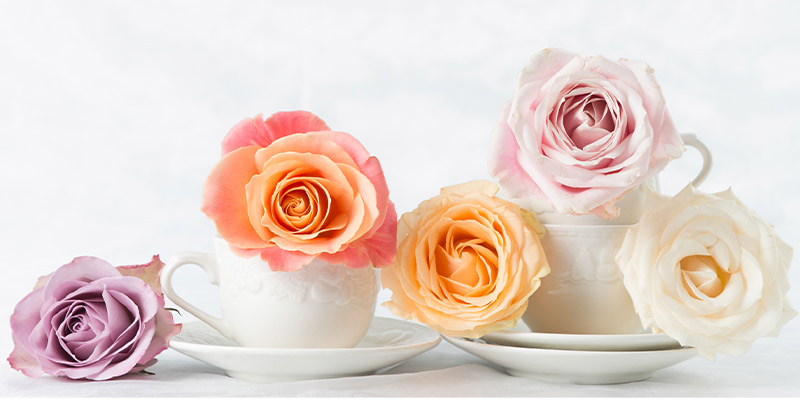
Not only do flowers look and smell beautiful, but many species can also be eaten, allowing you to add a sprinkling of floral magic to your favourite recipes.
Plenty of edible flowers may offer health benefits, too, helping to calm everything from stress and anxiety to digestive, respiratory and skin issues.
If you’d like to discover the best edible flowers for cakes, drinks and cooking, you'll find a list of our favourites below.
But first, it would be amiss of us not to run through some brief tips on how to eat flowers safely.
- If you aren’t sure that a flower is edible, check a trusted source before having a nibble, as any part of it may be poisonous. Similarly, never garnish a dish with a non-edible flower purely for decorative purposes, as your guests may assume it can be eaten. For starters, hydrangeas, daffodils, bluebells and lily of the valley are no-gos.
- Remove the stamens and pistils where possible because the pollen they contain can spark allergic reactions.
- Don’t go overboard. Less is more when it comes to edible flowers, especially if your stomach is not used to them or you are prone to allergies. Try a small amount first to see how your body reacts.
- Steer clear of any flowers that have been treated with pesticides, as these may be harmful, and avoid picking those growing close to polluted roads. If you can grow your own patch of edible flowers organically at home, all the better. Regardless, always rinse your flowers with water before eating them to remove any dirt or bugs.
Which flowers are edible?
Roses
The ancient Romans used roses in cooking and to add flavour to wine. Evocative of an English country garden, their delicate fragrance is often used to refine desserts, jams, jellies and cocktails, but they also make beautiful crystallised cake decorations. In general, if you like a rose’s scent, you’ll like its taste. Just remember to remove the heel from the base of the petals, as this can taste bitter.
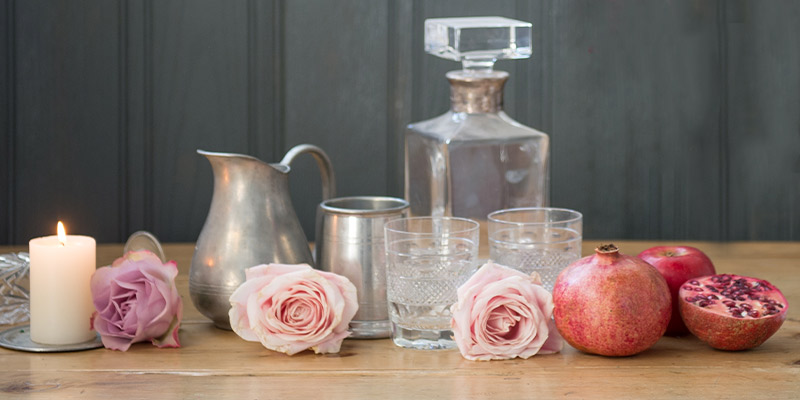
Lavender
Lavender’s fragrant purple flowers are well known for aiding relaxation and helping us drift off to sleep, but they can also improve both sweet and savoury food. Try making lavender sugar to liven up biscuits and preserves, or adding the tiny blooms to stock when making sauce for duck, lamb or chicken dishes.
Sunflowers
You’ll likely already have a bottle of sunflower oil in your kitchen, and have enjoyed the seeds in bread, but did you know that the jolly yellow petals are also edible? They have a slightly nutty flavour that some liken to asparagus and are delicious in Asian stir fries. The green buds can be eaten too and taste similar to a Jerusalem artichoke. In fact, there are so many ways to eat sunflowers it's believed they were one of the first crops cultivated in North America!
Carnations
Carnations are ideal for injecting a shot of colour into salads, soups or pitchers, but you should tear the petals off rather than use the whole flower - the base is bitter. Taste-wise, expect something spicy and clove-like, especially from flowers with a strong scent. They’re a go-to for bakers, but also team nicely with ice cream, seafood and sauces.
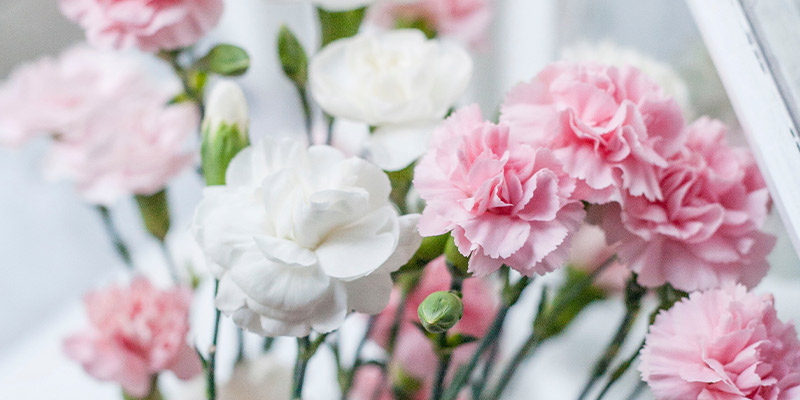
Daisies
Did you know you can eat your daisy chain? The flower heads of this humble childhood favourite can be used to decorate food, albeit without adding much flavour, while the buds make an excellent substitute for capers once preserved in vinegar. The leaves have a bitter aftertaste, but some like them in salads and they can also be sautéed as greens. You may also wish to drink daisy tea, as it’s rich in vitamin C, has anti-inflammatory properties and may help to relieve constipation.
Elderflower
Not purely for sipping as a cordial, delicious as that is, these tiny white blossoms are heavenly paired with lemon in baking. So much so that Prince Harry and Meghan Markle opted for an elderflower and lemon wedding cake.
Pansies
Chances are, you’ll have seen pansies (and closely linked violets) adorning a wedding cake or two once candied. Foodies love these edible beauties as they come in such a wide range of colours and sizes, from fiery reds and oranges to rich blues and purples. Eaten raw, they have a fresh, grassy flavour with a touch of spice.
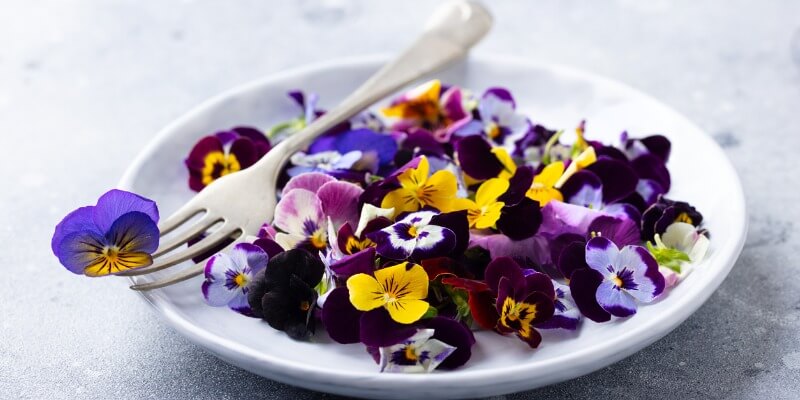
Echinacea
The roots of the popular echinacea can be dried to create a herbal tea. Its bee-friendly pink flower heads aside, echinacea is known for its anti-inflammatory, cold-relieving properties. So if you’re feeling under the weather, pour yourself a cuppa.
Hibiscus
Responsible for one of our favourite herbal teas, berry-pink hibiscus has a softly citrus flavour. The brightly-coloured petals often crop up in fruit salads, relishes and jams.
Chrysanthemums
The Japanese use their spicy national flower to make a special soup, often also featuring mushrooms, ginger, prawns, chicken and miso. Elsewhere, lightly fry the petals in vegetable oil before adding them to stir-fries and salads – but sparingly, they pack a punch!
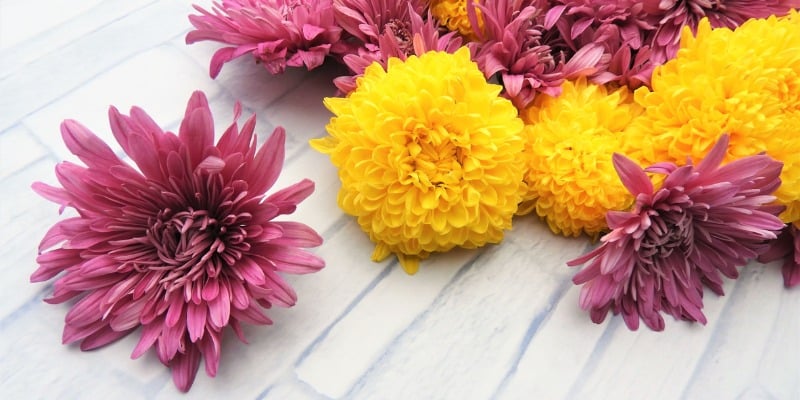
Nasturtiums
Orange, red and yellow nasturtiums have a peppery flavour akin to watercress, making them tasty in salads and garnishes, while their pickled buds can make excellent substitutes for capers (tip: pick them when they’re green, not brown) and are delicious blended with cream cheese for a spread or used to ganish casseroles.
Marigolds
Cheery marigolds are fabulous for adding colour to soups and salads, while their subtly spicy, citrussy taste adds a welcome tang. If you don’t want to spend money on pricey saffron, they make a good substitute for giving butter, rice or baked goods the golden touch, hence why marigolds used to be known as ‘poor man’s saffron’.
Dandelions
Don’t dismiss dandelions on account of their ‘common weed’ status, as they’re delightfully easy to forage. You can eat the whole plant, which is packed with vitamins and minerals, with the sunny yellow flowers serving as a base for homemade dandelion wine and making pretty additions to barbecue side dishes. If you love your coffee but are trying to cut down on caffeine, try roasting and grinding the root for a healthier alternative.
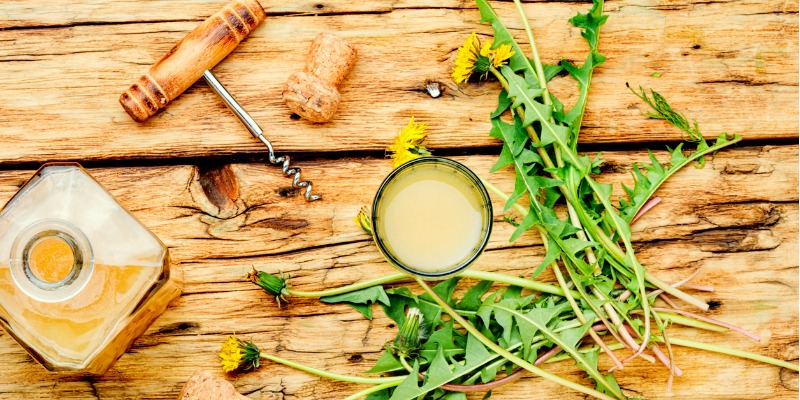
Borage
The bright blue flowers of this furry-leaved herb have a fresh cucumber taste that works well in fruit and green salads alike, as well as the traditional english pudding, Blackberry Fool. To impress guests, try freezing them in ice cubes to make a party punch sparkle – they’re perfect in a Pimm’s.
Chamomile
Usually enjoyed as a relaxing pre-bedtime tea, chamomile’s small, daisy-like flowers have a homely apple-like flavour. Mix them into fruity bakes or sprinkle them over fresh salads.
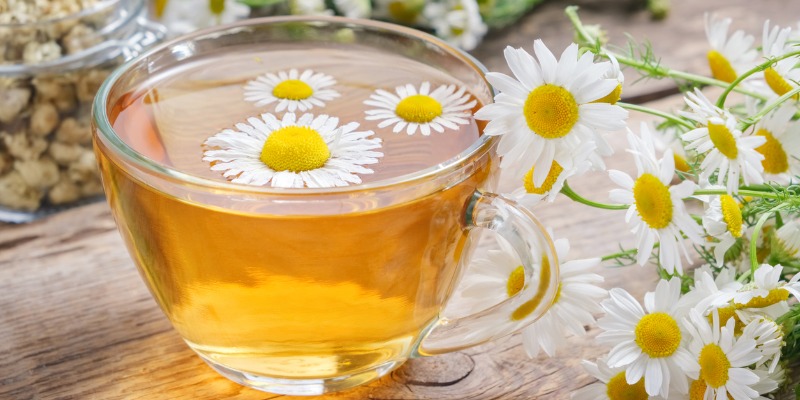
While we enjoy eating flowers, nothing beats gazing in wonder at their beauty. Decorate your dining table with one of our bountiful bouquets today, including a stunning selection of in-season summer flowers designed by our head florist.
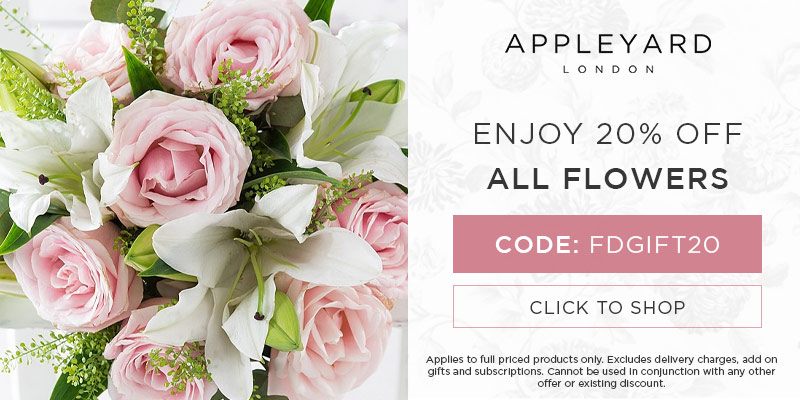

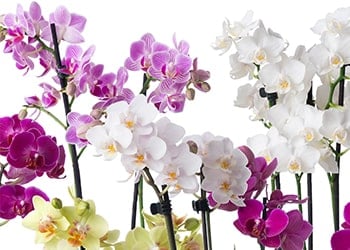
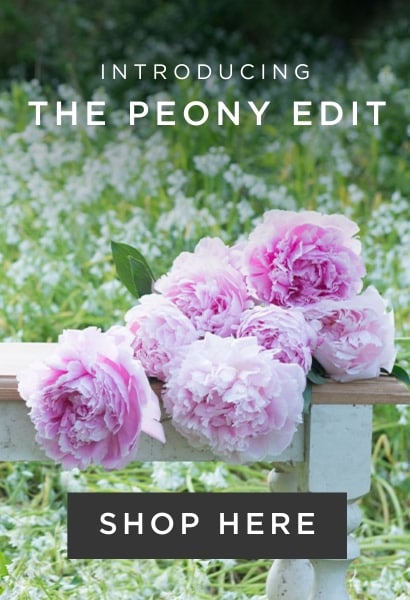
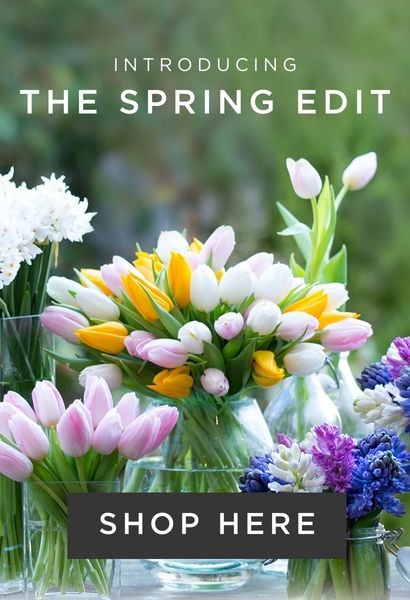


